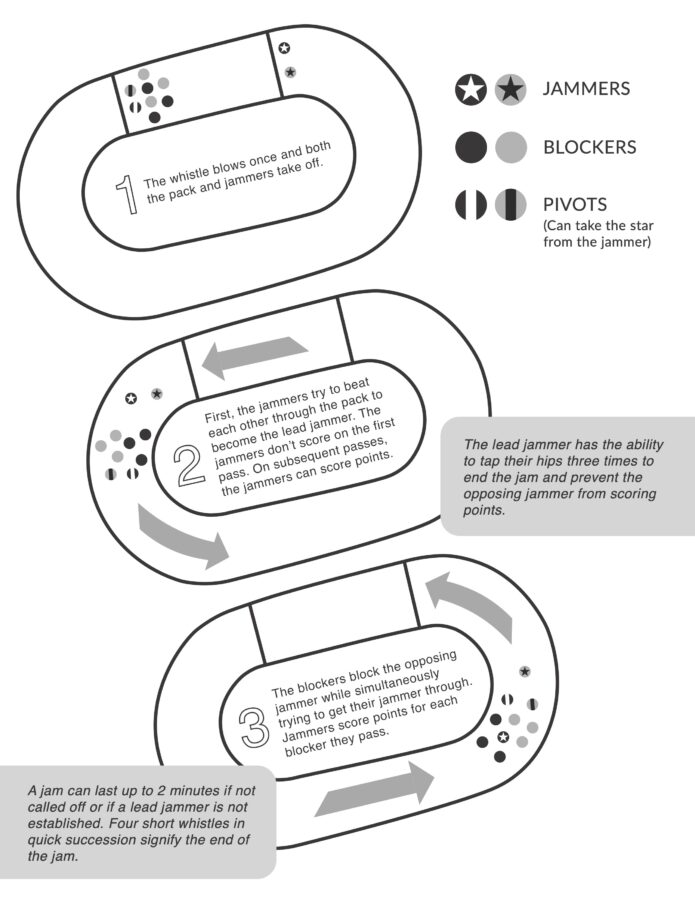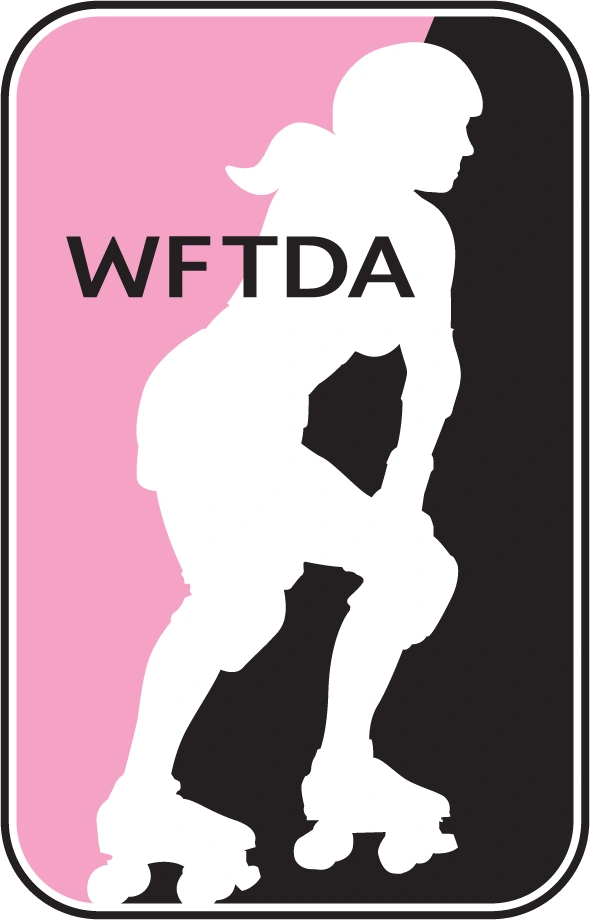Derby 101
Photo: Chris Basford
Learn About Roller Derby!
What is flat track roller derby?
Flat track roller derby is a fast-paced contact team sport that requires speed, strategy and athleticism. The flat track version of the sport evolved in 2001 and has quickly grown to encompass more than 400 leagues worldwide. This is largely due to the ease of setting up a flat track — it can be done on any flat surface that is suitable for skating, such as skating rinks, basketball courts, parking lots and even airplane hangars. This DIY spirit drives the sport and allows roller derby leagues to create their own unique identities and adapt their structures to reflect their local communities.

What is the WFTDA?
The Women’s Flat Track Derby Association is the governing body for women’s flat track roller derby, and a membership organization for the leagues to collaborate and network. The organization created and maintained the first standardized rule set for the flat track game. The WFTDA also serves as the sanctioning body for flat-track roller derby games, hosts regional and national tournaments, sets safety standards, and provides roller derby insurance to athletes and leagues. There are currently 301 WFTDA member leagues.
What are the roller derby playing positions?
JAMMER wears a star on their helmet, and their role is to score points by passing opponents. Each team has one jammer per jam (round of play). Jammers line up behind the pack at the start of the jam. They then try to pass through the pack but do not start scoring points until after their initial pass.
PIVOT is a special blocker who wears a stripe on their helmet. A pivot is the only player who can take over as jammer, a move called a star pass. Only one pivot per team can be fielded on the track.
BLOCKERS are positional skaters who form the pack. There can be four blockers from each team, with one allowed to be the pivot blocker. Blockers never score points.
About Blocking
These blocks are the basis of roller derby. Mastering these basic blocks is also the key to playing the game.
Positional Blocking
This block uses the butt to prevent an opponent from passing. It’s one of the fundamentals of blocking in roller derby. Although positional blocking may seem passive, skaters must be able to move across the track quickly and in sync with their teammates in order to keep an opposing jammer behind them.
The Shoulder Check
This is an upper-body hit, one of the most commonly used hits. These can be painful when shoulders dig into an opponent’s arm as skaters try to force their way through.
The Hip Check
Another staple of derby, the hip check is more focused on the lower body. By aiming a hip toward an opponent’s mid-thigh, a skater can be more effective in throwing her opponent off-balance.
The Full Body Slam
This move combines all that is wonderful about a hip check and a shoulder check by using both at the same time. It’s very effective for moving an opponent out of the way. The full body slam, as the name suggests, uses the whole side of a skater’s body to hit their opponent. These kinds of big hits are the cause of many a big fall and are sometimes referred to as “rock star hits.”
History of the game
Roller derby dates to the 1920s, originally used to describe roller skate races. In the late 1930s, Leo Seltzer’s touring competition, Transcontinental Roller Derby, began to evolve to a more physical competition emphasizing skater collisions and falls. This evolved into the foundation of the team sport that still exists today: two teams of five skaters who score points by passing members of the opposing team. Both men and women competed in roller derby games.
Roller derby events drew increasingly large audiences once the sport began to be televised in the late 1940s. In the early 1960s, competing roller derby franchises emerged, some of which emphasized theatrics more than sport. As popularity dwindled, Jerry Seltzer, Leo’s son, shut down his roller derby organization in 1973.
There were several short-lived attempts to revive this sport in the 1980s and 1990s, including RollerGames, which featured a figure-8 shaped banked track and staged action storylines, similar to professional wrestling leagues.
In the early 2000s, modern women’s roller derby got its start in Austin, Texas. Starting with the Texas Rollergirls, these new leagues formed as businesses run by the athletes themselves. The flat track version of the sport spread like wildfire in subsequent years, as the ability to skate on a skating rink floor or other venues, rather than having to build and store a large banked track, made it possible to play the game just about anywhere. By 2010, there were more than 450 flat-track roller derby leagues worldwide.

Follow us on socials:
